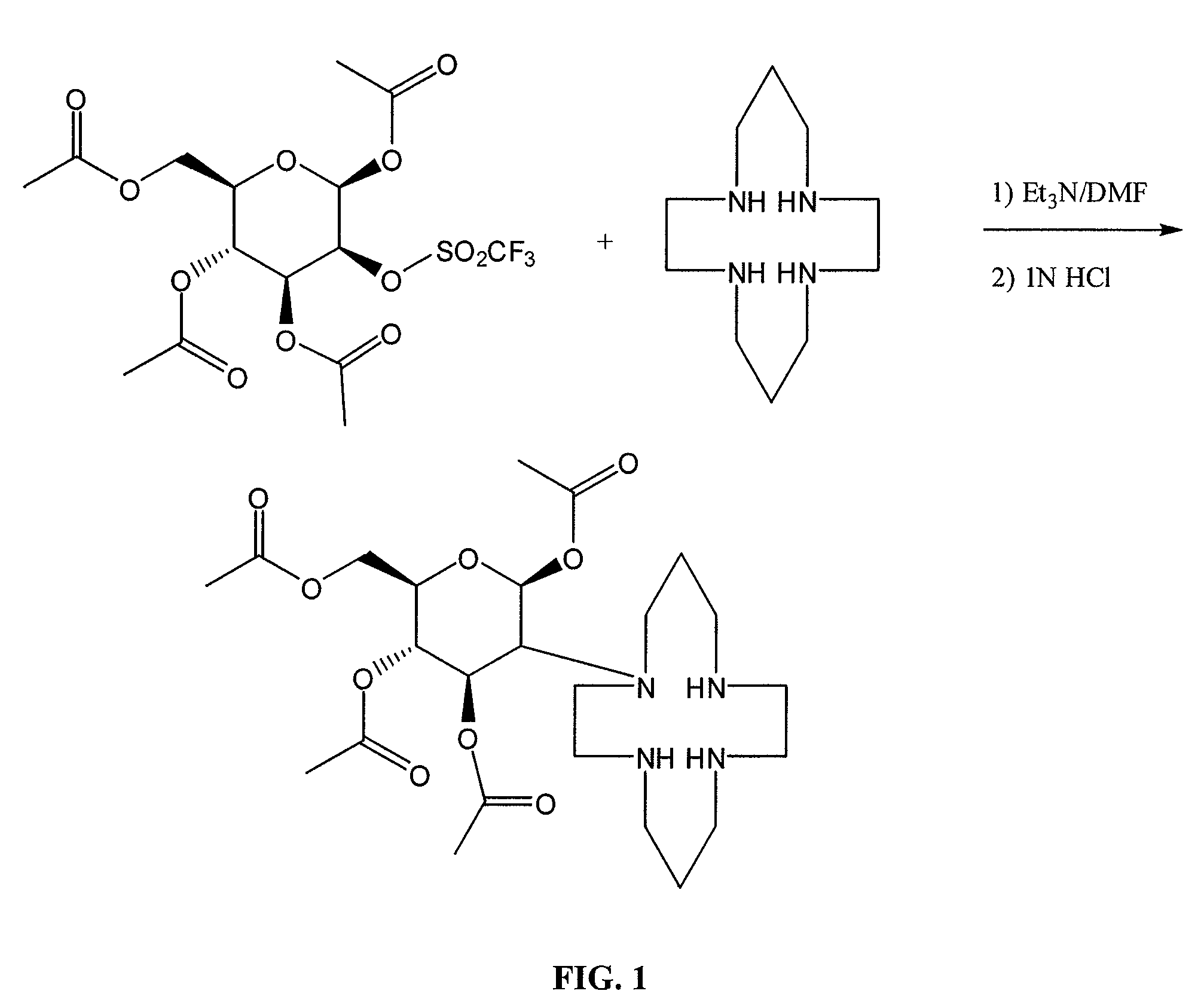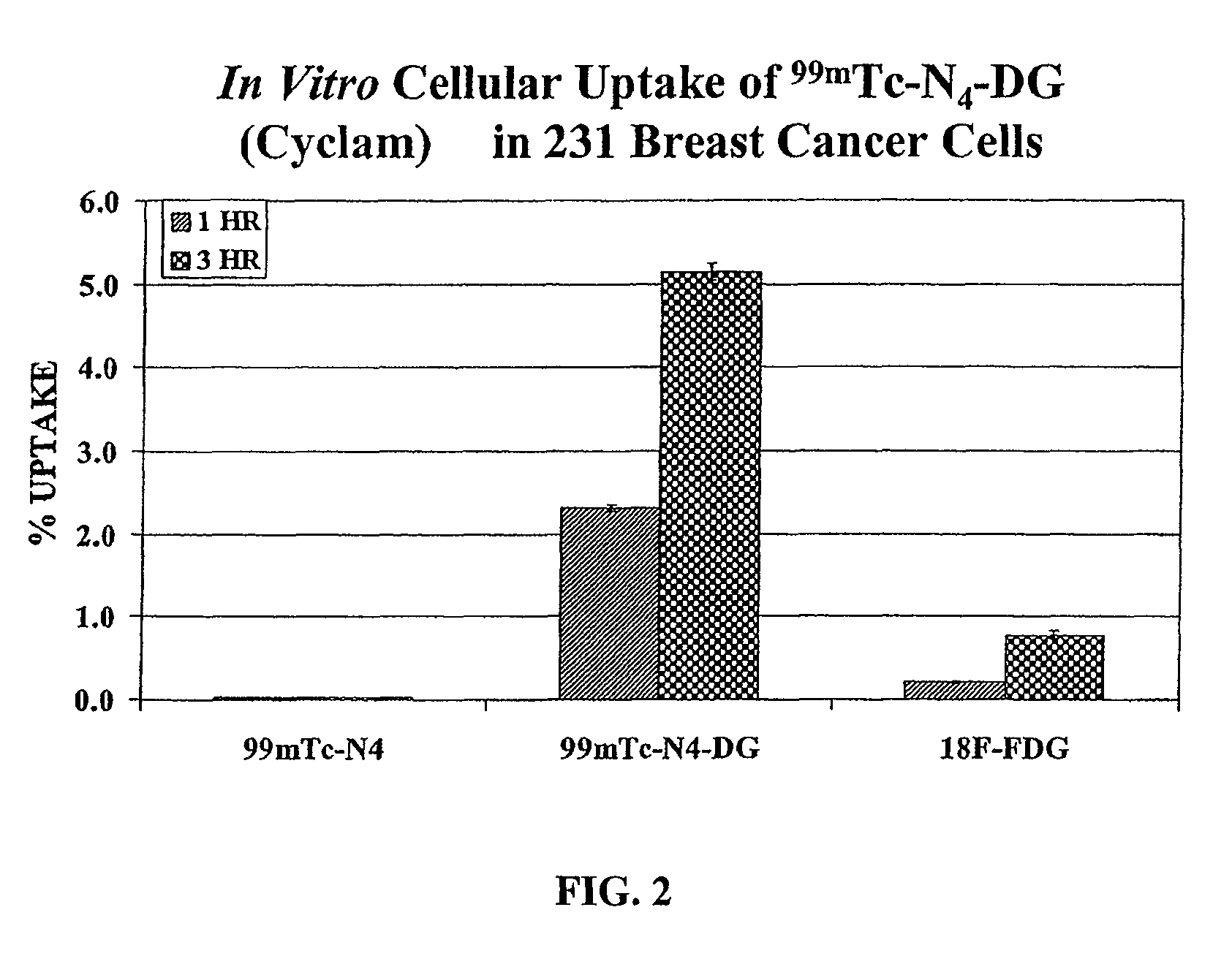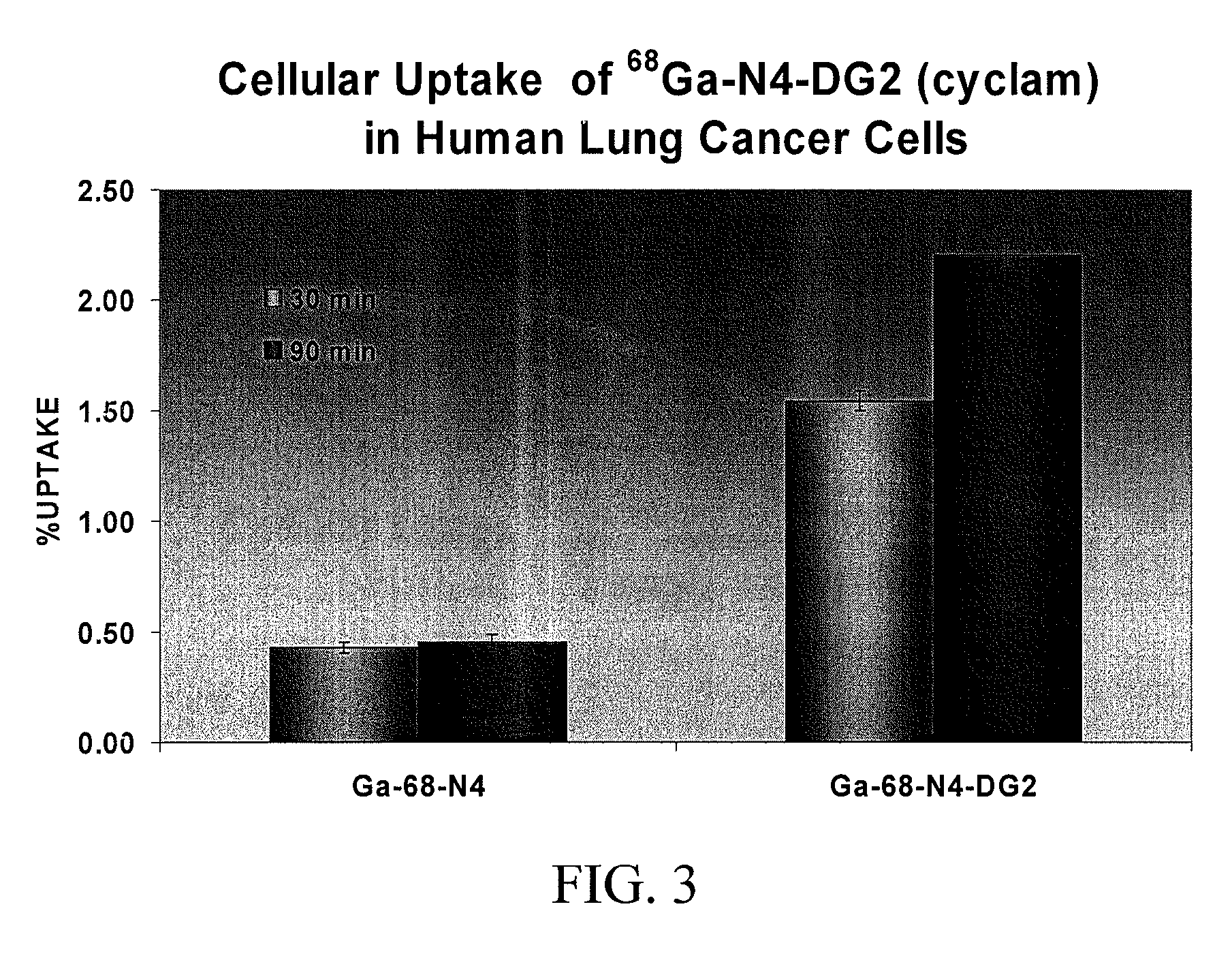Compositions and methods for cellular imaging and therapy
a cellular imaging and cellular technology, applied in the field of chemistry and radionuclide imaging, can solve the problems of complex chemistry, long synthesis time, and limited clinical practice, and achieve the effects of minimizing waste of reagents, minimizing product loss, and saving tim
- Summary
- Abstract
- Description
- Claims
- Application Information
AI Technical Summary
Benefits of technology
Problems solved by technology
Method used
Image
Examples
example 1
Protection of N4 Compounds for N-Mono Substitutes
[0397]A. Protection of Cyclam with Ethyl Trifluoroacetate
[0398]
[0399]4.006 g (20 mmol) of cyclam (1,4,8,11-tetraazacyclotetradecane) was placed into a solution of 2.79 ml of triethylamine in 15 ml of dried methanol. 6.92 ml of ethyl trifluoroacetate was added dropwise to the upper solution at room temperature with stirring. The addition continued over a period of 5 min. The homogeneous reaction mixture was cooled with an ice-water bath to control the mild exothermicity. Stirring was continued under nitrogen for 5 hours. Volatiles were removed in vacuo. The residue was passed through a small silica-gel plug (25 g) and eluted with 100% ethyl acetate. The eluted solvent was concentrated to give the product as a white foam (8.972 g, 95% yield).
[0400]B. Protection of Cyclen with Ethyl Trifluoroacetate
[0401]
[0402]The same protocol as described in Example 1A was used for this reaction, with the substitution of 3.445 mg (20 mmol) of cyclen (1...
example 2
Preparation of Sulfonated and Iodinated Tyrosine Derivatives
[0406]
[0407]A. O-Alkylation of Tyrosine with 3-Bromopropanol
[0408]2953.3 mg (10 mmol) of N-(tert-butoxycarbonyl)-L-tyrosine methyl ester (Boc-Tyr) in 30 ml of anhydrous methanol solution was added into 50 ml of methanol solution containing of 540.2 mg (10 mmol) of sodium methoxide. 1363 μL (15 mmol) of 3-bromopropanol was added to the upper Boc-Tyr solution. The mixture was stirred at 70° C. for 6 hours after at room temperature for 20 min under a nitrogen atmosphere. The mixture was dissolved in 20 ml of ethyl acetate after evaporation under reduced pressure in order to remove volatiles. The organic layer washed with water (2×20 ml), dried with anhydrous magnesium sulfate and solvent was removed using a rotary evaporator. A clear liquid that turned to a white solid (hydroxypropyl-Boc-Tyr (HOPr-Boc-Tyr), 2.9158 g, 82.5% yield) was yielded through column chromatography using a hexane-ethyl acetate gradient (10:1 to 1:1).
[040...
example 3
Preparation of Sulfonated and Iodinated α-Methyltyrosine Derivatives
[0413]
[0414]A. N-Protection of α-Methyltyrosine
[0415]Di-tert-butyl dicarbonate 13.095 g (60 mmol) was added to a solution of α-methyltyrosine (AMT) (8.370 g, 40 mmol) and anhydrous triethylamine (11.2 ml, 80 mmol) in 40 ml of anhydrous DMF. After stirring overnight at room temperature, the mixture was evaporated under reduced pressure followed by filtration. A white solid (Boc-AMT, 11.217 g, 90.6% yield) was gained through column isolation of the residue using a hexane-ethyl acetate gradient (10:1 to 10:7).
[0416]B. O-Alkylation of Boc-AMT with 3-Bromopropanol
[0417]The procedure of Example 2A was followed with the substitution of 3.094 g (10 mmol) of Boc-AMT. A clear liquid, which turned to a white solid (HO—Pr-Boc-AMT, 3.289 g, 89.5% yield) was yielded through column chromatography using a hexane-ethyl acetate gradient (10:1 to 10:5).
[0418]C. Tosylation of 3-HO—Pr-Boc-AMT
[0419]The procedure of Example 2B was followe...
PUM
| Property | Measurement | Unit |
|---|---|---|
| gamma energy | aaaaa | aaaaa |
| time | aaaaa | aaaaa |
| time | aaaaa | aaaaa |
Abstract
Description
Claims
Application Information
 Login to View More
Login to View More - R&D
- Intellectual Property
- Life Sciences
- Materials
- Tech Scout
- Unparalleled Data Quality
- Higher Quality Content
- 60% Fewer Hallucinations
Browse by: Latest US Patents, China's latest patents, Technical Efficacy Thesaurus, Application Domain, Technology Topic, Popular Technical Reports.
© 2025 PatSnap. All rights reserved.Legal|Privacy policy|Modern Slavery Act Transparency Statement|Sitemap|About US| Contact US: help@patsnap.com



